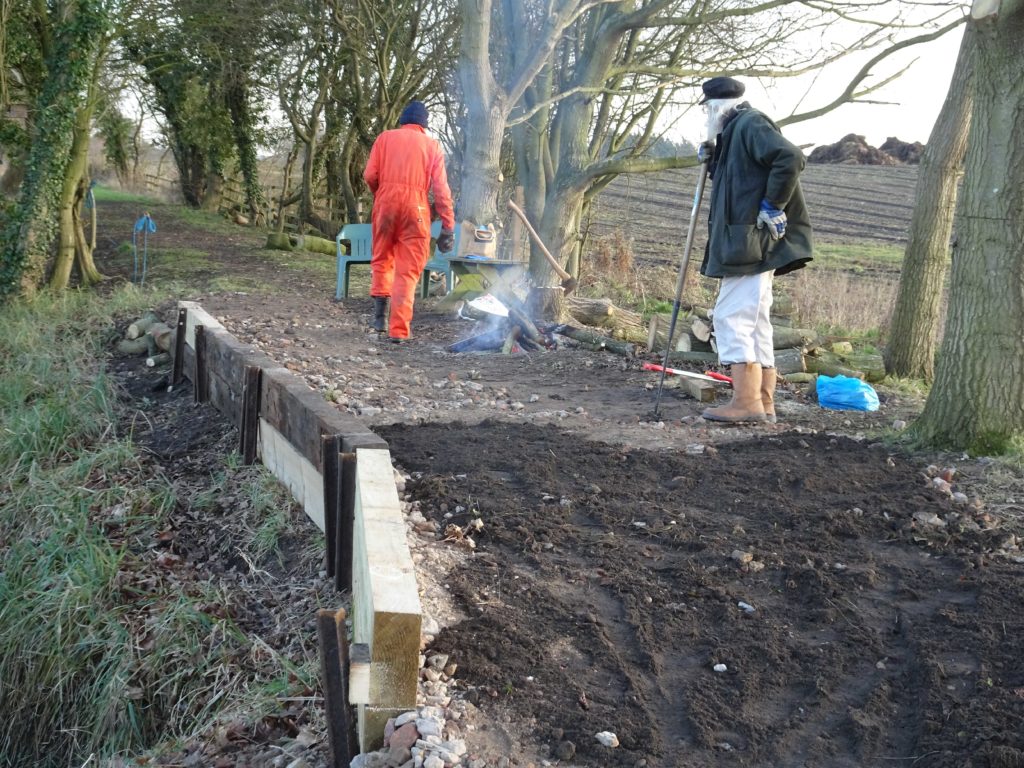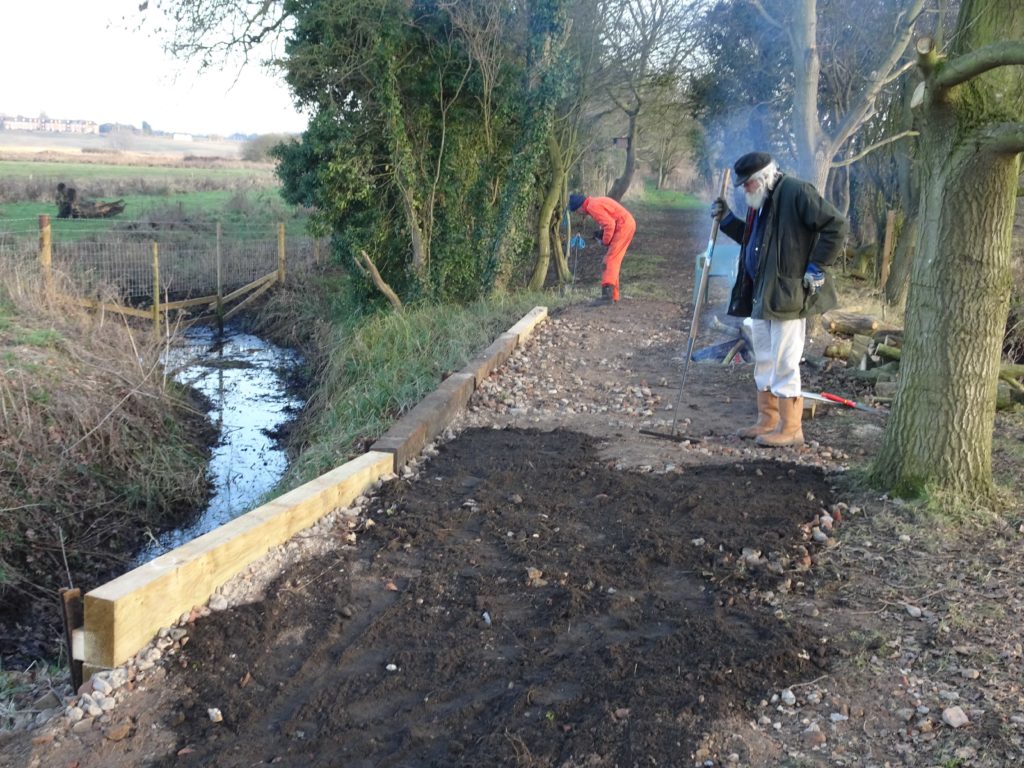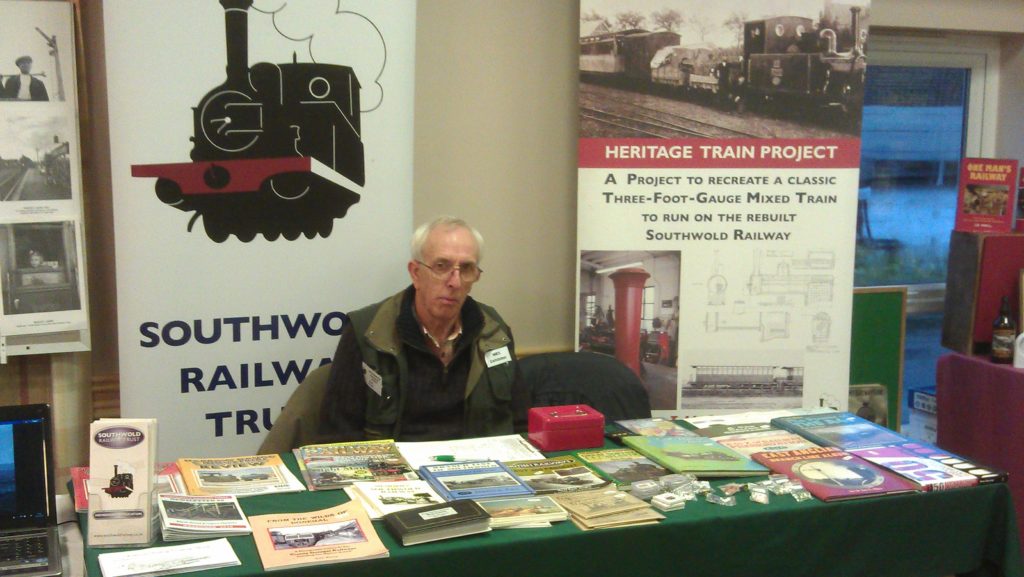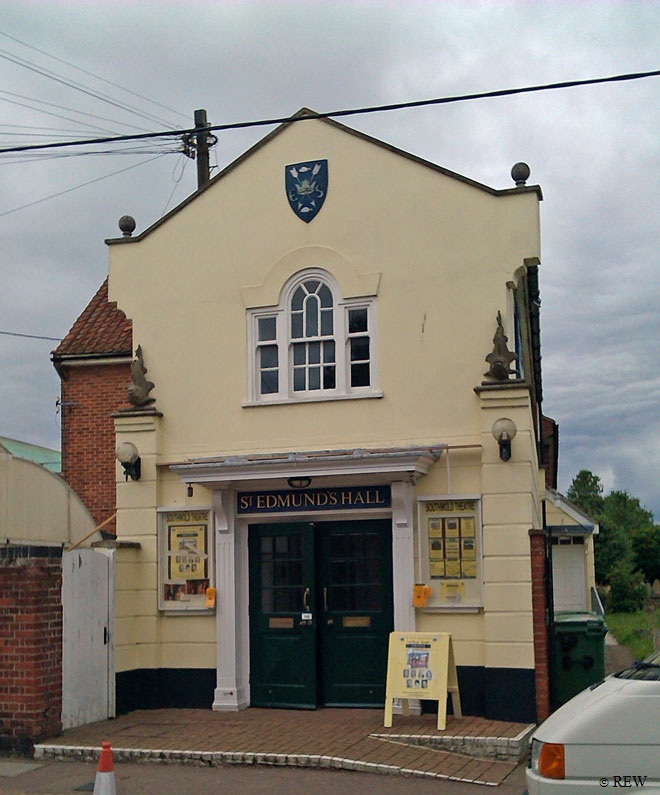Apologies to our regular readers: our usual blogger has been out of action with flu. And everyone else is far too busy working on SRT projects to write about them!

Large gangs of volunteers have continued to devote their time, sometimes in pretty nasty weather, to the cause. On the trackbed close to Wenhaston Station, some scrub self-seeded oaks have been (as recommended by Suffolk Coastal District Council) thinned to allow the best to grow. This has in turn created just enough space to allow vehicle access onto the trackbed, although the degraded embankment has had to be strengthened using standard gauge sleepers, with rail as piling. The rebuilt embankment is beefed up with sub-base, and topped with topsoil, so that grass seeding can be done in spring

The (complicated) land boundary at the site of the new bridge has been cleared and fenced off: a well-marked “hard” boundary is ideal for removing any future neighbour disputes. Having almost completed clearing the remaining 1879 embankment in SRT ownership, the team will now move on to the rest of our land between that point and Blyford Lane, where there are many fallen and dead trees, entangled with bramble and weeds.
Meanwhile, workshop teams wisely chose a rainy day to tidy up the workshop itself, and the timber store. The track panels for Peckett “Scaldwell” are ready to receive the locomotive (although we don’t have a date for the move, yet). The Wagon 41 team is close to completing the very complex floor (How can a wagon floor be complex, I hear you all cry? Well, it’s a matter of finding a good [and invisible] way to strengthen the floor edges to take the weight of the full-length hinged sides – on the original, the hinges were fixed into the end-grain of the floorboards, which must have required constant mending), and the high curved ends near completion. The sides are easier, being just three planks each, ten feet long and eight inches wide: Peggs of Aldeburgh are doing the hard work of the hinges and catches. As has been mentioned before, most of the work is endless drilling of large holes through heavy steel – several hundred by the end.
Covered Van 40 has its sliding doors being made by the SOLD workshop in Lowestoft.
These two heritage train items have reached a point where a list can be made (and has been, as anyone who knows the Chairman can imagine) of everything left to do – less than an A4 sheet on each! (even if some items – such as “design, specify, and provide air braking” are very large in themselves)
There is some very good news on the Southwold Project – now with “Southwold Railway Steam Works” as a marketing title: the Bond issue has been so successful, thanks to the generosity of our Members, that the land purchase process has been started. This is a very complex matter, so we hope that our supporters will bear with us while it proceeds. Meanwhile, the Trust, having dedicated most of its available funds to this flagship project, will be appealing for further sponsorship to cover development costs. The volunteers are looking forward to laying some permanent three-foot-gauge (and 7¼”) track, not to speak of building the visitor centre and nature reserve, but it will all cost, even with substantial volunteer input.

Two of our regulars – Chris and Bob – looked after our promotional stand at the Norwich Model Railway Show on 11th: the organisers were kind enough to donate the proceeds of the raffle to the SRT: valuable help with funding our many projects.

A date for your diaries: the bi-annual Trust Model Show will be at St. Edmund’s Hall, Southwold, on Saturday 29 April. Many interesting layouts are booked, and there will be the chance to talk to us about the Steam Works plans and progress, plans for our Wenhaston land, and for the entire SR trackbed to Halesworth.
